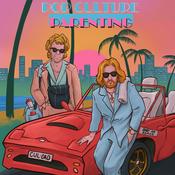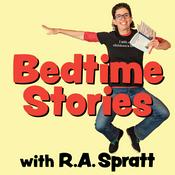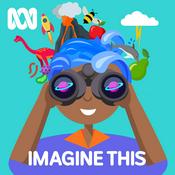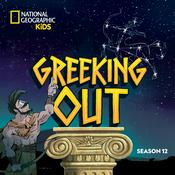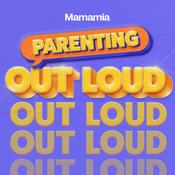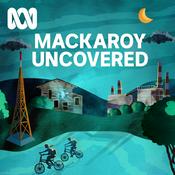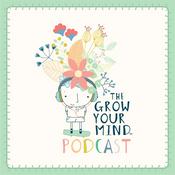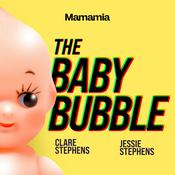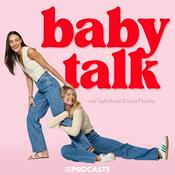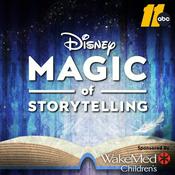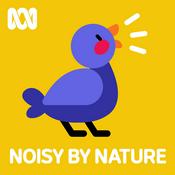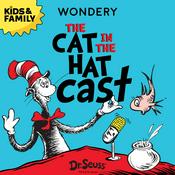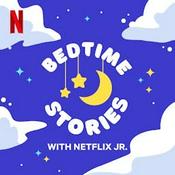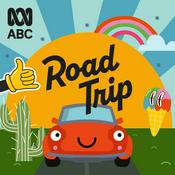278 episodes
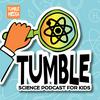
The Science of Whiskers
26/12/2025 | 16 mins.
This is a re-broadcast of a favorite episode from 2019. We actually won our first AAAS Kavli Award for this episode, along with The Cave of the Underground Astronauts. Check it out! Why do seals have whiskers? Listener Karah’s question dives into the wonderful world of whisker science. Robyn Grant, a self-described “whisker biologist” shares her discoveries of how whiskers work, from training a friendly seal named Moe to making slow-mo movies of super speedy “whisking.” (You will find no cuter field of research… but if you do, tell us about it!) Listen to learn about humans’ hidden whisker muscles and find out to rank whiskers like the pros! Want to learn more about whisker science? We have more from our interview with Robyn on our Patreon podcast feed! Subscribe for $1/month at patreon.com/tumblepodcast. You can also tune in on the Castbox podcast app by tuning into our Premium Channel. Find more whiskery educational resources on our blog, at sciencepodcastforkids.com. If you want a t-shirt from our merch store, go check it out at tumblepodcast.dashery.com.

Tumble Mailbag: Your Questions about Language, Sandwiches, and Cats - and Our Oldest Patrons!
19/12/2025 | 24 mins.
We’re wrapping up 2025 with a final Mailbag episode, featuring some of our longest-running Patrons! Did you know, when you sign up to support Tumble on Patreon, you’ll get a personalized message from Marshall? And if you’ve been supporting us for years, we might just call you up to chat! We’ll meet our mysterious patron, MiloSloth and his family, and learn why they love to support the show. Plus, why is the English language so weird? Who made PB & J a combo? And do all cats hate getting wet? We have the answers. If you want to join Milo and support Tumble on Patreon, just go to patreon.com/tumblepodcast and pledge at whatever level you want! $1 or more gets you ad-free versions of the show, and $5 and up gets you a birthday shout out! Also don't forget about gift subscriptions, which make great last-minute holiday gifts! Want Tumble merch? Just go to tumblepodcast.dashery.com for t-shirts, mugs, hats, tote bags, and so much more.

The Minecraft Experiment
12/12/2025 | 24 mins.
How do people learn — and how can a video game help us find out? In this episode, we meet cognitive scientist Charley Wu, who built the ultimate science “mod” in Minecraft! Journey into a video game world of science to discover how and why Charley used one of the world’s most popular games to follow his curiosity about how humans learn. Featuring a “braintrust” of kid Minecraft experts to explain the game to Lindsay and Marshall, and a song inspired by The Minecraft Movie. You can learn more about Charlie, and find a transcript of this episode on the blog on our website, sciencepodcastforkids.com. Support us on Patreon! You’ll get ad free episodes, special chances to be on the show, and of course, birthday shoutouts, when you sign up at the $5 level at patreon.com/tumblepodcast. Find out what we’re up to - from live events, merch drops, and more when you subscribe to our newsletter, on sciencepodcastforkids.com. You can also follow us on Instagram and subscribe to our YouTube. Try finding awesome shirts and other stuff on our merch store: tumblepodcast.dashery.com

The Science of Snot
28/11/2025 | 21 mins.
Why do we have snot? Do animals get stuffy noses, too? We delve into the world of thick secretions with the help of Dani Rabiaotti, zoologist and author of “Believe it or Snot: The Definitive Field Guide to Earth’s Slimy Creatures.” You’ll find out why we make so much mucus, and meet the slimiest animals on the planet. Plus, you’ll discover why scientists study slime, even though it’s super gross. This is a rebroadcast of one of our favorite episodes from season 5, inspired by a question we recently got from our listener Harrison, who wondered why snot exists. Hopefully this answers the question for him! If you want to support Tumble with your holiday shopping, there are lots of ways to do it! Our merch store can be found at Tumblepodcast.dashery.com You can join our Patreon at patreon.com/tumblepodcast, or give a gift subscription at Patreon.com/tumblepodcast/gift. Or, click our affiliate link at bit.ly/tumblemel and get some awesome science kits while helping support the show!

What Sounds Do Fish Make?
14/11/2025 | 23 mins.
What sounds do fish make? 🐟🎶 We know that cows say moo, and sheep say baa, but what do fish say? Come explore “Under the Sea” to discover the chorus of fish noises with help from fish ecologist Audrey Looby. We’ll find out how fish can be sneaky, loud, and even “slimy, grumpy cuties” (Audrey’s words) who go boop boop - and what they can tell us about life underwater. 🌊 You can learn more about Audrey, and find a transcript of this episode on the blog on our website, sciencepodcastforkids.com. Support us on Patreon! You’ll get ad free episodes, special chances to be on the show, and of course, birthday shoutouts, when you sign up at the $5 level at patreon.com/tumblepodcast. Find out what we’re up to - from live events, merch drops, and more when you subscribe to our newsletter, on sciencepodcastforkids.com. You can also follow us on Instagram and subscribe to our YouTube.
More Kids & Family podcasts
Trending Kids & Family podcasts
About Tumble Science Podcast for Kids
Listen to Tumble Science Podcast for Kids, Pop Culture Parenting and many other podcasts from around the world with the radio.net app

Get the free radio.net app
- Stations and podcasts to bookmark
- Stream via Wi-Fi or Bluetooth
- Supports Carplay & Android Auto
- Many other app features
Get the free radio.net app
- Stations and podcasts to bookmark
- Stream via Wi-Fi or Bluetooth
- Supports Carplay & Android Auto
- Many other app features


Tumble Science Podcast for Kids
download the app,
start listening.
